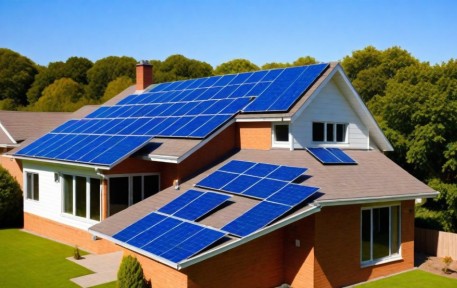
Climate change stands as one of the most pressing challenges of our time, threatening ecosystems, human health, and economies globally. The increasing concentration of greenhouse gases in the Earth’s atmosphere, primarily due to human activities such as deforestation, industrial processes, and the burning of fossil fuels, is driving unprecedented changes in the climate system. However, amidst these daunting challenges, technology emerges as a beacon of hope. It offers innovative solutions to mitigate the effects of climate change, reduce greenhouse gas emissions, and transition towards a more sustainable and resilient future. This article explores the various ways in which technology can help combat climate change, highlighting advancements in renewable energy, carbon capture and storage, smart agriculture, and more.
Renewable Energy Technologies
Renewable energy technologies are at the forefront of the fight against climate change. Solar panels and wind turbines harness the power of the sun and wind, respectively, providing clean, sustainable energy sources that emit no greenhouse gases. Advances in photovoltaic materials and wind turbine design have significantly reduced the cost of renewable energy, making it competitive with, or even cheaper than, fossil fuels in many regions. Moreover, the development of floating solar farms and offshore wind farms opens up new possibilities for harnessing renewable energy in locations where land is scarce.
Energy Storage Solutions
The intermittent nature of renewable energy sources like solar and wind necessitates reliable energy storage solutions. Batteries, particularly lithium-ion batteries, have seen remarkable improvements in capacity, efficiency, and cost. These advancements enable the storage of surplus renewable energy for use during periods of low production, ensuring a stable and continuous power supply. Furthermore, innovations in other energy storage technologies, such as pumped hydro storage, compressed air energy storage, and flow batteries, offer promising alternatives for large-scale energy storage.
Carbon Capture and Storage (CCS)
Carbon capture and storage (CCS) technologies provide a means to reduce greenhouse gas emissions from industrial processes and fossil fuel power generation. CCS involves capturing carbon dioxide (CO2) emissions at their source, transporting them to a storage site, and securely storing them underground in geological formations. Recent advancements in CCS technologies, including direct air capture (DAC), which extracts CO2 directly from the atmosphere, hold the potential to not only mitigate emissions but also to actively reduce atmospheric CO2 levels.
Smart Agriculture and Precision Farming
Technology plays a crucial role in making agriculture more sustainable and climate-resilient. Smart agriculture and precision farming technologies, such as satellite imagery, drones, and IoT sensors, enable farmers to monitor crop health, soil moisture, and nutrient levels in real-time. This data-driven approach allows for the precise application of water, fertilizers, and pesticides, reducing waste and environmental impact. Additionally, innovations in crop genetics and biotechnology, such as drought-resistant and high-yield crop varieties, can enhance food security in the face of changing climate conditions.
Green Transportation
The transportation sector is a notable contributor to wold wide greenhouse gas emissions. Electric vehicles (EVs), powered by renewable energy, offer a cleaner alternative to conventional gasoline and diesel vehicles. Advances in EV technology, including improvements in battery life, charging infrastructure, and vehicle range, are making electric cars, buses, and trucks more accessible and practical for everyday use. Furthermore, the development of hydrogen fuel cell vehicles and sustainable aviation fuels presents additional pathways to decarbonize transportation.
Smart Cities and Energy Efficiency
Smart city technologies aim to make urban areas more sustainable and livable. Intelligent energy management systems, smart grids, and energy-efficient buildings reduce energy consumption and emissions. Smart transportation systems, including traffic management and public transit optimization, minimize congestion and pollution. Additionally, green infrastructure, such as green roofs and urban forests, enhances carbon sequestration and helps cities adapt to the impacts of climate change.
Conclusion
Technology holds the key to addressing the multifaceted challenge of climate change. Through innovations in renewable energy, energy storage, carbon capture, smart agriculture, green transportation, and smart cities, we can reduce greenhouse gas emissions, enhance resilience, and transition towards a sustainable future. However, the successful implementation of these technologies requires supportive policies, investment, and collaboration among governments, industries, and communities worldwide. Together, we can harness the power of technology to mitigate climate change and safeguard our planet for future generations.



